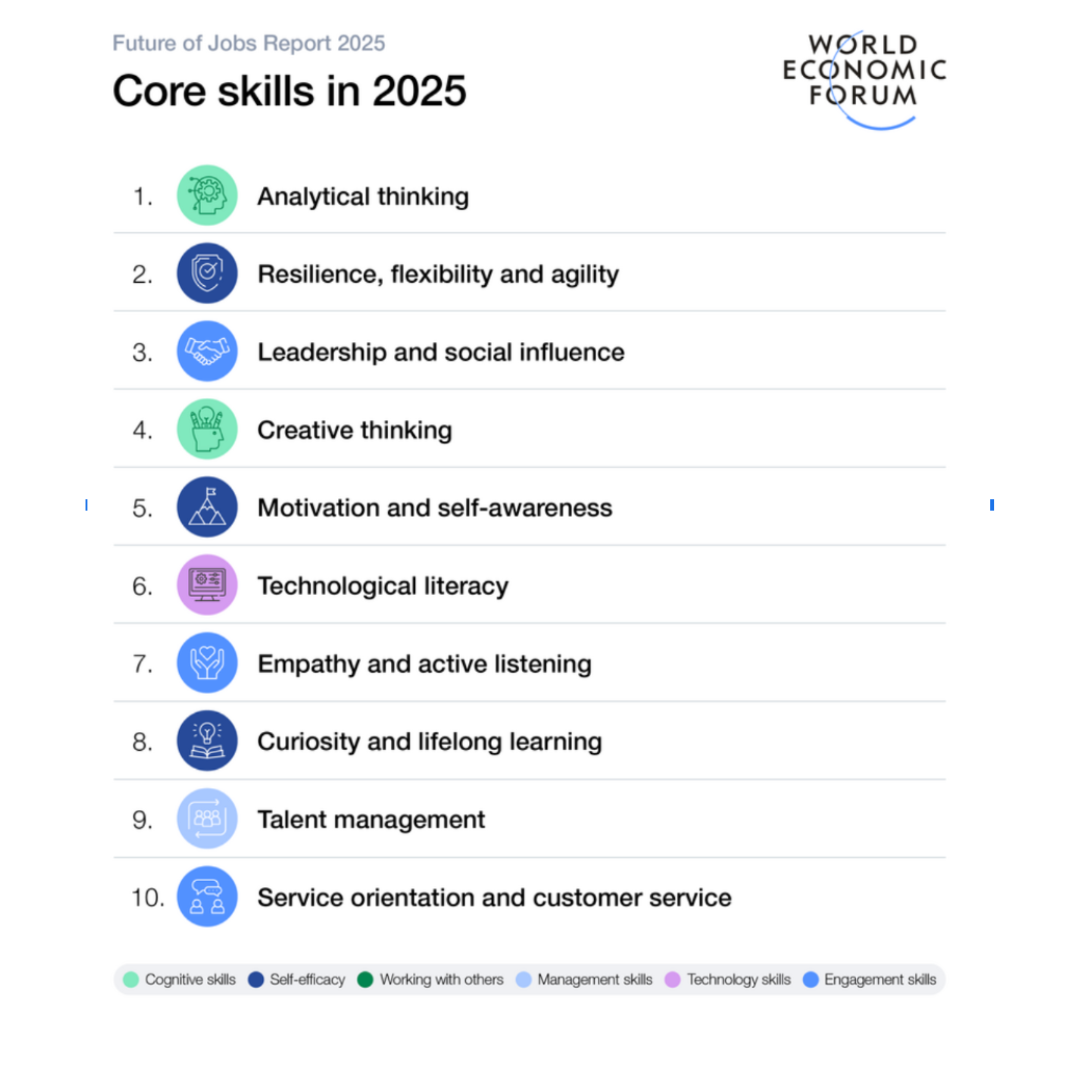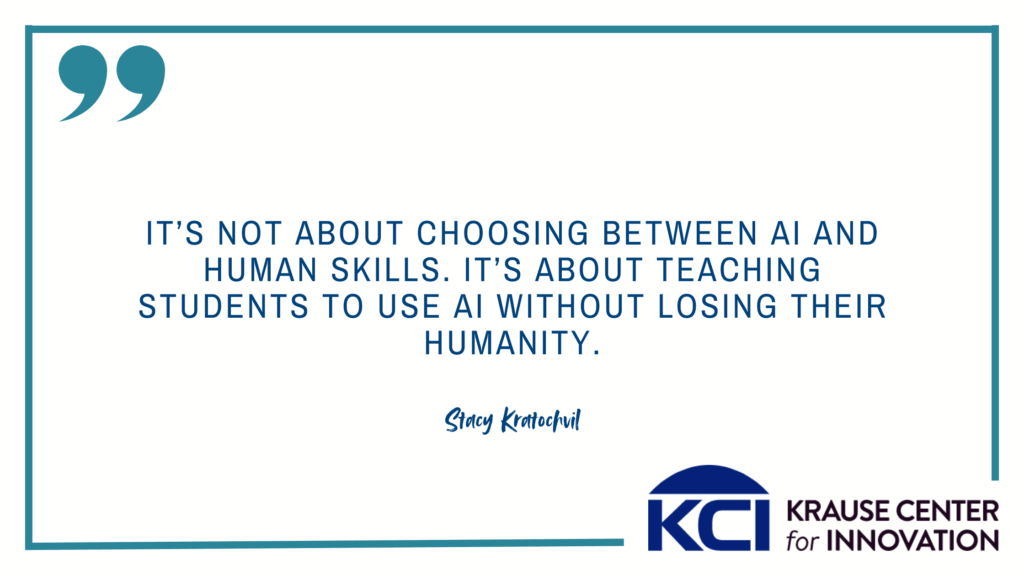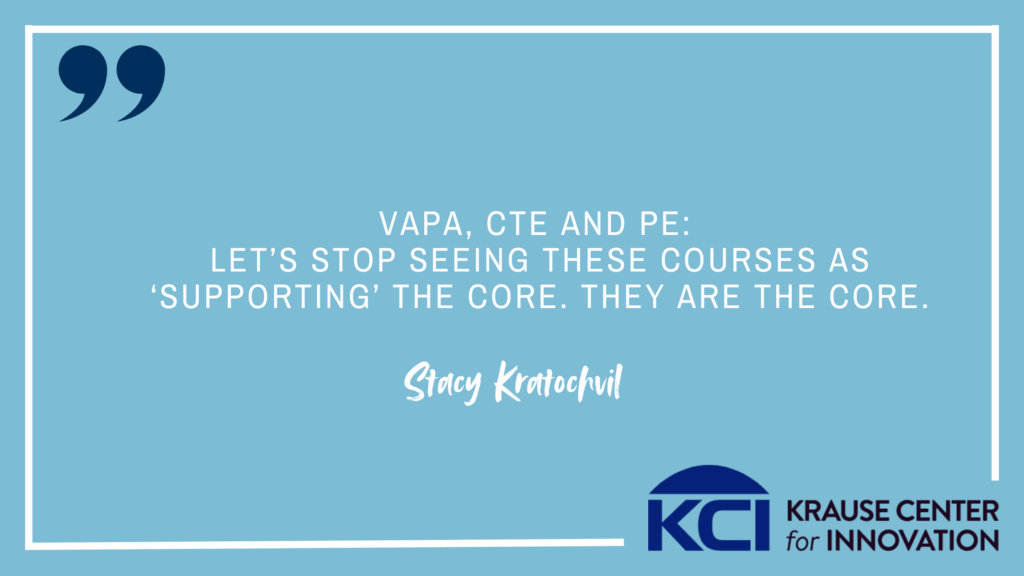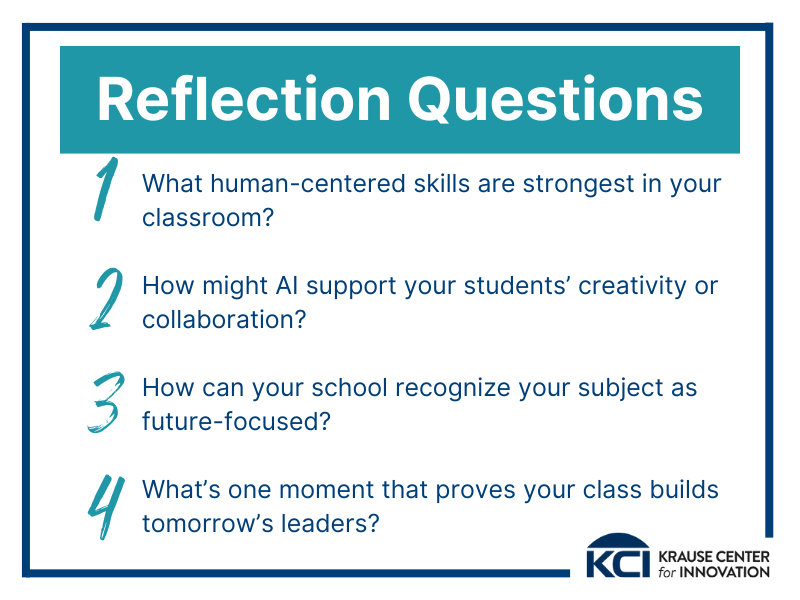June 18, 2025
It’s not just STEM. In a world of AI, we need to center our humanity.
My Unexpected Path
When I first stepped into the world of AI education, I didn’t come from coding or robotics. I came from dance. From physical education. From spaces where students move, create, collaborate, and discover who they are.
So yeah, I felt like an outsider.
But then I realized something: the classrooms where we foster creativity, empathy, teamwork, and resilience—those are exactly the classrooms we need to protect, expand, and celebrate in the age of AI. If you teach the arts, PE, or a hands-on CTE program, this post is for you. You’re not behind. You’re not optional. You’re leading the charge into a more human future.
The Overlooked Strengths of “Non-Traditional” Subjects
Let’s name the truth: VAPA, PE, and CTE have often been treated like optional electives. Like extras squeezed in around the “real” subjects. But in a world racing toward automation, the human skills we build in these classrooms are exactly what students need most.
In your class:
- Students choreograph, build, design, and lead.
- They problem-solve in real time.
- They navigate group dynamics, try and fail and try again.
- They create things that didn’t exist before.
These are human-centered skills. And AI cannot replace them.
We don’t just need to protect these programs. We need to have more of them. They’re not “nice to have.” They’re absolutely requirements. According to the World Economic Forum’s Future of Jobs Report 2025, the top workforce skills include analytical thinking, resilience, leadership, self-awareness, empathy, and curiosity. These aren’t tech skills. They’re human ones.These are the exact skills nurtured in gyms, studios and maker spaces!

Humanizing Technology
AI can do a lot. But it doesn’t laugh. It doesn’t sweat. It doesn’t comfort a teammate after a missed shot or interpret a line of dialogue with emotional nuance. Technology lacks what we teach every day: humanity.
Our classrooms see students as whole people. That lens doesn’t disappear when we bring in tech. It sharpens.
It’s not about choosing between AI and human skills. It’s about teaching students to use AI without losing their humanity.

When we introduce AI tools, we do it with intention, always asking:
- Does this serve the learner?
- Does it build empathy or diminish it?
- Does it connect students or isolate them?
This is what human-centered learning looks like.
So how do we actually do this? How do we make AI part of a human-centered classroom without losing what matters most?
Teaching Students to Use AI with Purpose
How do we get students to use AI to amplify their humanity?
We start by anchoring AI use in purpose, not just productivity. That means asking:
- Why are we using this tool?
- Who does it help?
- What does it reveal about us?
We model reflection. We ask students not just what AI did for them, but how it changed their thinking, expanded their empathy, or sharpened their voice. And we teach them to question, not to take AI’s output at face value, but to challenge it, reshape it, and make it their own.
It’s about creating with AI, not copying from it. It’s about using AI to explore big ideas, not to avoid thinking through them.
When students use AI to design a set they imagined but didn’t know how to build, to generate fashion sketches from historical themes, or to simulate a customer interaction in a business or culinary setting—they’re not just learning tech. They are exploring identity, culture, empathy, and communication. They’re learning about people. And that’s where the magic happens.
Empowering All Educators
So here’s the shift: AI education isn’t just for STEM. It belongs in every subject, and especially in the ones that have always prioritized people over products. If you’re adapting on the fly, building relationships, managing chaos with humor, and helping students become more self-aware you are already doing future-ready work. Let’s stop seeing these courses as “supporting” the core. They are the core. The resilience and grit built in physical education, the creative risk-taking and growth mindset developed through drama, the real-world problem-solving in culinary arts… This is the foundation of life in an AI-driven world.

You don’t need to change what you do. Just name it. Celebrate it. Share it.
Call to Action: Your Story Matters
So here’s the ask: Share your story. Help your students share theirs. Show the world how your classroom builds the human skills we all need—creativity, empathy, resilience, collaboration. And yes, AI is part of this story too. Used well, it can amplify your students’ creativity, deepen their thinking, and expand their voice. But only if we lead with intention. Only if we keep humanity at the heart of learning.
At the Krause Center for Innovation, we’re building space for exactly this kind of leadership. The kind where AI meets human connection and where teachers in every subject area are seen as designers of the future. Through workshops, professional learning, and educator communities, we support the kind of classroom work that keeps creativity, critical thinking, and human growth at the center.
So let’s lead. Let’s make our classes examples of what future-ready education really looks like.
Reflection Questions
- What human-centered skills are strongest in your classroom?
- How might AI support your students’ creativity or collaboration?
- How can your school recognize your subject as future-focused?
- What’s one moment that proves your class builds tomorrow’s leaders? (SHARE IT!)

Because the future isn’t just about machines. It’s about the kind of humans we’re helping our students become.
Want support in making this vision real?
The Krause Center for Innovation offers workshops and professional development that help educators balance AI and human-centered learning.
Note on AI Use:
I used ChatGPT to help me organize and refine my thoughts for this blog. I provided the ideas, notes, and direction, and the AI tool helped me pull it all together. I reviewed and edited everything to make sure it reflects my voice, stories, emojis ?, and the message I want to share.

